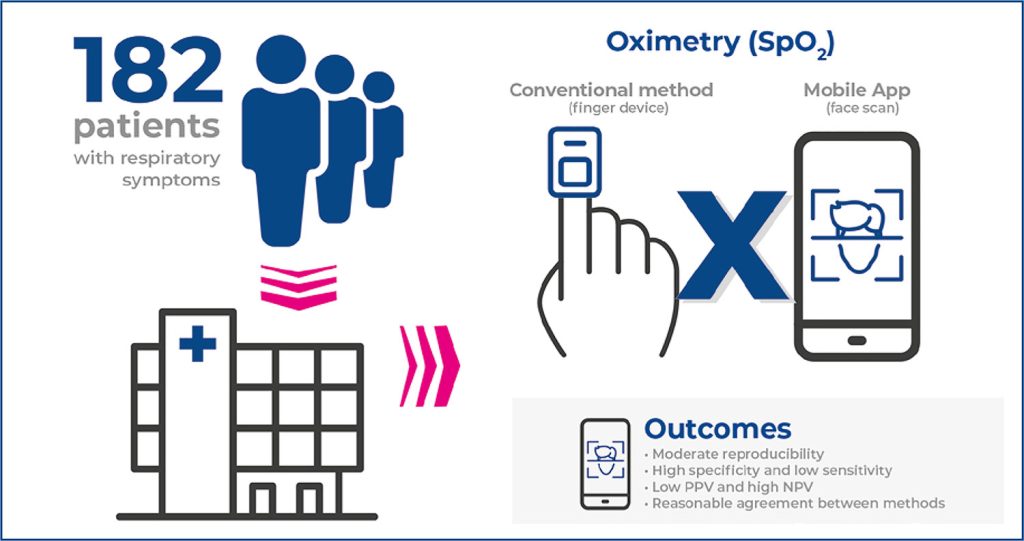einstein (São Paulo). 19/Dec/2022;21:eAO0025.
Mobile application-based oximetry: a potential tool for appropriate referral of patients with respiratory symptoms examined via telemedicine
DOI: 10.31744/einstein_journal/2023AO0025
Highlights
The evaluated method showed moderate reproducibility when compared to the gold standard practice.
This new method had a high specificity and a low sensitivity.
The observed high range of SpO2 levels between the methods could lead to a wrong patient referral.
The use of telemedicine to assess oxygen saturation in patient with dyspnea is a viable resource, although requiring improvement.
ABSTRACT
Objective
To calculate the positive likelihood ratio to determine whether telemedicine is able to optimize referral to the emergency department.
Methods
Unicenter study with 182 consecutive patients admitted to Hospital Israelita Albert Einstein due to respiratory symptoms. All patients were submitted to oxygen saturation measurement using the standard method Welch Allyn finger device vital sign monitor and a 2-minute evaluation (Binah.ai mobile application). The reproducibility of oxygen saturation measurements made with both methods was investigated using interclass correlation coefficients and analysis of dispersion. Bland-Altman plots were constructed and kappa concordance coefficients used to examine data normality. Accuracy was also estimated.
Results
Oxygen saturation measurement differences between methods were ≤2% in more than 85% of cases. The mean difference (bias) between methods was near zero (0.835; Bland-Altman analysis). Oxygen saturation measurements made using the Binah.ai mobile application had an average ability to detect patients with altered oxygen saturation levels compared to the conventional method (ROC analysis). The positive likelihood ratio of the mobile application was 6.23.
Conclusion
Mobile applications for oxygen saturation measurement are accessible user-friendly tools with moderate impact on clinical telemedicine evaluation of patients with respiratory symptoms, and may optimize referral to the emergency department.
591

